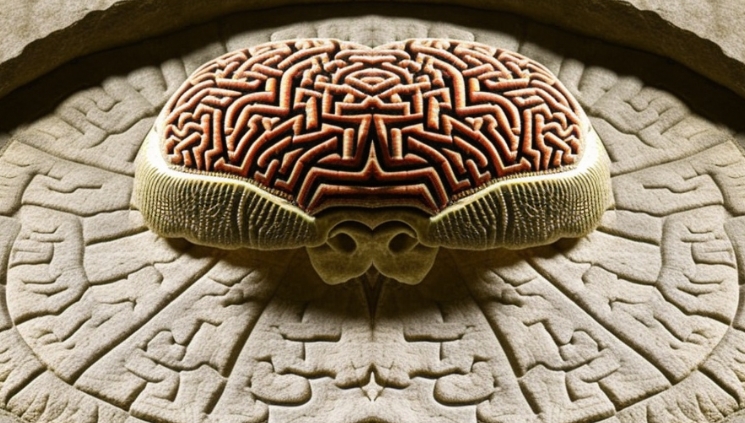Historiographical Criticism in the Age of Artificial Intelligence

Abstract: In this editorial, we announce the conscious adoption of Artificial Intelligence (AI) language models in the management of the journal Crítica Historiográfica, specifying the sections in which it is embedded, the advantages of use, and the guidelines in terms of authorship and referencing that will govern the journal from this edition.
Keywords: Artificial Intelligence, Academic Journals, Crítica Historiográfica.
Dear readers of Revista Crítica Historiográfica,
It is with immense pleasure that the editorial team of our journal announces the conscious and voluntary incorporation of Artificial Intelligence (AI) language models.
AI, recently exemplified in the mainstream media by ChatGPT, is an advanced technology that can be employed in a number of tasks related to text editing, offering many benefits for the managing of Crítica Historiográfica.
In addition to revising texts, suggesting grammar and style corrections in texts received for evaluation (“Reviews” and “Review Articles”), we use technology to proofread abstract translations, suggest review titles and keywords, create physical images (such as the one illustrated in this editorial), operating systematically and monthly on raw data collected on the web, mobilizing absolute and relative magnitudes on the brazilian bibliographic production, reading, describing and interpreting charts and tables and producing descriptive reports, enabling the publication of better quality reports and articles in terms of clarity and objectivity (such as the “Bibliographic Information” section, the last topic on our home page).
The use of AI is not limited to text editing and report production. The technology can also be used by the magazine’s readers and writers. It facilitates the construction of book reviews and review articles, making the production process more efficient and consistent because its resources reach all stages of research production and dissemination. Let us limit ourselves, however, to the two target products of our journal: the review and the review article.
For the production of reviews, especially for students starting higher education courses, technology can anticipate a classic outline of the genre, gradually built with the author’s reading notes. The student can remove information from the elements of the title, preface, summary and introduction and already provide his first paragraph, according to the rules of our magazine for the genre. Once the first text version is finished, he can submit it to logical examination, for example, checking for incomplete arguments (without justification) and logical fallacies of relevance and evidence. In this way, he realizes that he is capable of producing a smooth text and can more easily acquire a pattern prescribed by a historical domain (see the “Submissions” tab).
Technology also provides a first stylistic and grammatical revision of the text. Through successive commands in trial and error processes, examining the error and retrying, the student receives a detailed report on what needs to be improved. Consequently, this systematic exercise of interrogating the machine develops in the student the capacity to formulate more sophisticated questions and hypotheses, something that a professor (a human) cannot provide as quickly because it is impossible to provide each student with the instantaneous feedback he wantsor needs.
For the production of review articles, technology can suggest research questions, starting from a theme or a set of themes in a network, it can suggest hypotheses, lines of investigation configured in general and specific objectives and, respectively, research plans, typology of primary sources, bibliographic authorities and methods for processing sources. Can analyze texts, process the result of these analyzes qualitatively and quantitatively, comparing and establishing differences and similarities, positive points and problematic points. It can suggest writing plans, paragraph development strategies, arguments endowed with evidence and conclusions, examples and analogies and revise the text according to the requirements of the journal to which the work is addressed.
Technology, finally, can produce objective, abstracts, keywords and posts for social networks. You can suggest translating the review article into artistic languages, into visual, written or sound didactic material, into syllabi and course plans, lesson plans and test items and complete tests for the assessment of learning, aiming at translating the academic text to the wider audience.
All of this is only possible in the presence of people adequately trained in their domains, well-informed and predisposed to doing science within the parameters known in the last 100 years by most, in other words, who think of scientific knowledge as something constructed, uncertain, changeable and dependent on evidence and peer-reacted justifications.
This means that flesh-and-blood human beings continue to be in charge of academic production. This also means that we, at Crítica Historiográfica magazine, following parameters already in circulation abroad in the human and social sciences[i], do not accept artificial intelligence models as authors and demand that AI tools, when used in reviews and articles review, were incorporated as means of research in their most distinct meanings (method, technique, strategy, instrument, resource, etc.).
The editorial team of Crítica Historiográfica would like to thank all readers and contributors for their support and dedication to our journal. We invite everyone to continue following our scientific production and to explore the possibilities of technology at the service of science.
Atenciosamente,
Profa. Dra. Margarida Maria Dias de Oliveira (UFRN)
Prof. Dr. Itamar Freitas (UFS)
Prof. Dr. Magno Francisco de Jesus Santos (UFRN)
Prof. Dr. Fábio Alves dos Santos (UFS)
Profa. Dra. Jane Semeão (URCA)
Nota
[1] Check position of the journal Nature, on January 23, 2023
OLIVEIRA, Maria Margarida Dias; FREITAS, Itamar Freitas; SANTOS, Magno Francisco de Jesus; SANTO, Fábio Alves dos; SEMEÃO, Jane. Crítica Historiográfica in the Age of Artificial Intelligence. Crítica Historiográfica. Natal, v.3, n.10, mar./abr., 2023. Disponível em <https://www.criticahistoriografica.com.br/en/historiographical-criticism-in-the-age-of-artificial-intelligence/> DOI: 10.29327/254374.3.10-1
© – Authors who publish in Historiographical Criticism agree to the distribution, remixing, adaptation and creation of their texts, even for commercial purposes, provided that due credit is guaranteed for the original creations. (CC BY-SA).








